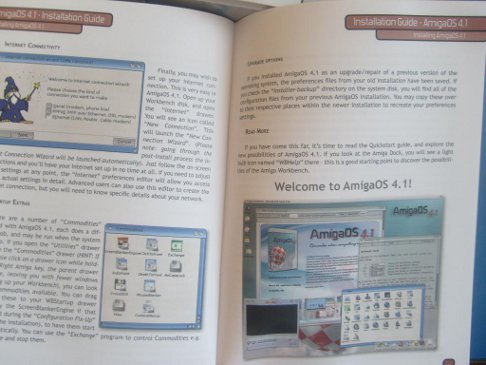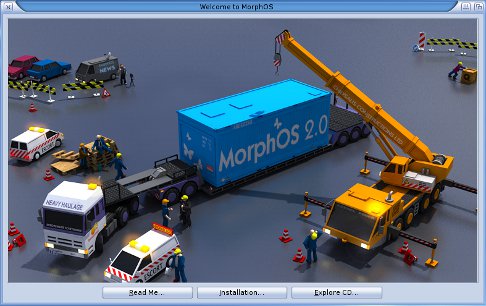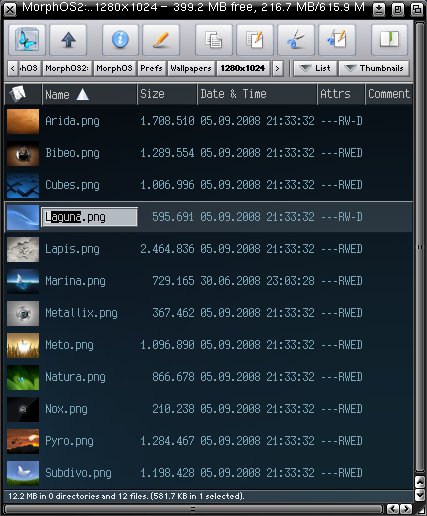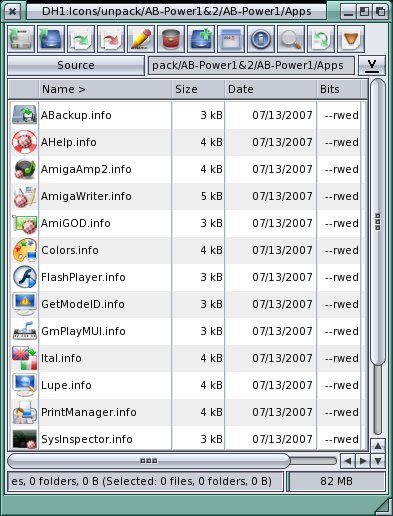
Amiga Scene: Jump into the hole
Written by Kas1e
In this article I want to talk a bit about the current situation in the Amiga Scene and all the related and interesting things which happened around it. For all the people who drifted away from it but still have some interest.
I will be not the first one to say that currently the Amiga demo scene is not as energetic as for example 15, 10 or even 5 years ago. That is of course not only Amiga demo scene related, that is related to the whole demoscene. Yes, we can see new and interesting demos from time to time (does not matter on which platform), but we all can agree that the demoscene today is not so interesting to new blood and even old farts can hardly find interest in it anymore. Why? I think it's because today even just a little piece of any show on TV, any advertisement, any cartoon shows the designer's/modeler's/gfxer's skills, which are mostly better than any demoscener's skill. 20 years ago demoscene was the only stage which showed us something fresh and new. Today, the demoscene is a kind of "hobby show", and I can agree with the BP10 organizers when they say:
"Also, as there is no doubt, the scene indeed is in some minor trouble these days: Back when we started, being interested in computers (coding, graphics, composing) next to always meant you had to get into touch with the demo scene. May it be due to coding tutorials, may it be due to trackers, or because the best pixel tools or even games where created by demosceners. Plus, being a nerd wasn't exactly a fashion trend neither, which helped form a close community with those sharing the same interests. Things are completely different these days - everyone who's young is using computers, there is the Internet, and tons of ways to find people sharing interest in coding, graphics or music outside of the demoscene."
Things are different today. The demoscene has done for what it was intended: show people what computers can do, where they can be used, and prepare the world for the important role of computers in our lives. And these cartoons, animations, advertisements, TV shows - that is our life today, and we all can be proud that we were part of it.
Of course this sounds a bit pessimistic, but there is nothing bad to it. Everything changes. I think the demoscene itself will be alive for a long time, as long as people are interested in computers, computer history and so on. But will it have the same role as before? I think the demoscene has already achieved a major part of what it intended. But time will tell.
So, while the demoscene starts to be less and less energetic year by year, the other aspects of not-so-popular computers can be interesting for anyone who tries to find the old feeling of "computing fun", or something new and different from Win/Unix/Mac. But for the beginning, let's have a look at how our old and nasty AmigaOS progresses and changes over time. Of course I can't write the full history of the Amiga, because it's very long. But in brief: After AmigaOS matured to the version 3.9 with the latest update called BoingBang2 (in 2001), the official works on it stopped because of many different factors. We must not forget that Commodore went bankrupt in 1994, so 7 years of official life are more than good already. In the late 1990s and the begining of the new century AmigaOS split in 4 projects (mostly unofficial, but one of it is official):
- AmigaOS4 - that is the next official AmigaOS, done by the company Hyperion, which has the right on it (there were about 5 - 6 years of legal issues between Amiga Inc. and Hyperion, and only 1 year ago Hyperion won their right to develop it). More info about OS4 can be found here. The price for this OS is about 100 EUR and supported hardware is SAM xx, Amiga 1, Pegasos 2, and there is also an unsupported version of OS4 for classic hardware with PPC CPU.

- MorphOS - that OS was born on the classic Amigas, when the PPC accelerator started to become more or less common in the Amiga world. It's no AmigaOS itself, but it has the same API as AOS3.x and many new advantages. You can check Wikipedia for more detailed info. MorphOS is not free, and you need to buy it officially. For now it costs about 100 EUR. But there's an advantage over AOS4: You have a trial time of usage. The supported hardware: Pegasos 1, Pegasos 2, Efika and Macintoshes (which is good, because many of you can try it). Also classic hardware is supported, but as with AOS4, less and less energetic, because everyone wants normal and speedy hardware, and not that classic/dying/retro crap.

- AROS - that is a free and open source version of AmigaOS. Many parts of AROS and MorphOS are the same, but MorphOS is much, much more stable. AROS is an "easy to try" AmigaOS solution because it works on many platforms and CPUs. The main one is x86 (i386). That means that you do not need any new hardware, just the same PC. However, AROS is the most buggy 'AmigaOS' and in the terms of stability, bugs, and features, AOS4 and MorphOS are far superior. Still, it's free, and why not try it if have some time and interest. Check Wikipedia for more info here.

- AmigaOS3 - there is nothing official, just some attempts of some old freaks to create unofficial updates (like BoingBag3), addons, but nothing serious anymore, and nothing professional for the real market and real business.

Some MorphOS fans dislike AmigaOS4 fans (and vice-versa). One reason for this is that AmigaOS4 users are too much "fanboy-like", and they want scream "Amiiiiiggaaa" all the time, while MorphOS is modern and has the same feeling as AmigaOS, although it has a different name.
So, what is so interesting about MorphOS compared with AmigaOS4? First, MOS has a new and powerful desktop called "Ambient". It's just a replacement of the old Workbench, whose usage is very limited (which maybe was good and revolutionary 15 years ago, but not today). But it has bugs, and many things need to be improved. The development of Ambient makes pretty slow progress at the moment. On AmigaOS4 we have Filer, which is not officially integrated in the AmigaOS4 (but it will be soon), and AOS4 users use it as standalone binary. Ambient is faster and more configurable than Filer. But Filer has some functions which Ambient does not have (like for example recursive set of file bits. Such an important function, but not present in Ambient, strange).


The second difference is the 3D subsystem. MorphOS has full support of OpenGL (OS4 does so almost) and can emulate old Warp3D drivers, which works TWICE as fast as the original AmigaOS4 3D drivers.
And the third and, I think, most important difference: MorphOS can be run on Macintosh. That is very nice, because we have many Macintoshes in the world and no problems to find one. But these Macs are slow in comparison with the current x86 machines. Relating to AmigaOS4, you need to buy hardware which is "AmigaOS4 only" (+ some Linuxes). Hyperion says that in the next few months, the new AmigaX1000 hardware will be out, with modern perfomance, dual and fast PPC CPUs and so on. Time will tell. Anyone who has been interested in the Amiga world for the last 10 years knows that "soon" can easily mean "never".
Concerning myself, I found my gold solution for my interests: I bought Pegasos2 on which I can run AmigaOS4 as well as MorphOS. Both OSes fully support that hardware, and it's one of the fastest types of hardware available for AmigaOS4 for now. On my Peg2 I have a 1 GHz cpu, 1 GB of RAM, Radeon 9250, and Alt. Indeed, when you run some copies of movies in mplayer/dvplayer + OWB (modern browser) + YouTube + EUAE (emulator of old Amigas), then of course it will all be terribly slowed down. But for everyday need it's fine: Internet with support of YouTube, some kind of Flash based on freely available progs like Gnash and SFWDec, movies, music and such. Of course there is no magic, and for now you can't find any really modern and professional software like on Windowses (and we all know why), but still it is interesting to try (I talk about all the OSes).
AROS is of course faster (any x86 is good for it), but the situation with the software is the same, and it is a bit buggy in comparison with MorphOS and AmigaOS4.
Personally, I use AmigaOS4 for everyday needs, just because it feels better (for me) for now, although MorphOS currently offers more technical possiblities. The differences are not so big, and the most important problems concern both OSes (memory protection and resource tracking). You can crash the whole OS and lock the computer up just with any "badly writing" program. It is not like in Windows where you can simply kill the buggy program.
If you use well-known and not buggy programs, everything will more or less be fine. But you will always fear that at some point the OS might freeze because of some bug in some program. Yes, AOS4 and MOS have some kind of memory protection, but it's in a very early stage. It can help sometimes, but it's far from perfect. For example, on AOS4 you have GrimReaper, which can help you to kill or remove a buggy program (enough to save all your work).

In general I have a positive feeling both about MorphOS and AmigaOS4. Both OSes are mature, and the differences from AOS2.x are very visible. Both OSes also have a built-in 68k emulation, so you can just run old 68k exes in your system, and unless they try to access the hardware directly, they will work. If they do, you will have to use the well-known UAE, which on OS4/MOS is called E-UAE and works pretty well.
When I was writing this article, Moods Plateau released a new music disk called Hot Affairs, which was done as 68k binary, but in a system friendly way, and because of it works fine on AmigaOS4 and MorphOS.


All in all you need to try it yourself: Be it AmigaOS4 or MorphOS, or even AROS. Maybe you will find something interesting which will help you develop some useful programs. :)
PS: And of course, you can also check out our The Vague diskmag, about which we talk in another article in this Hugi issue. Visit it and read many articles about the current situations with demo/mags and other things on all the Amiga and Amiga like OSes.
Thanks for reading.
AmigaOS4.1.1 on Peg2/1GHz.
My YouTube vids related to AOS4
MOS review done by jPV
Kas1e